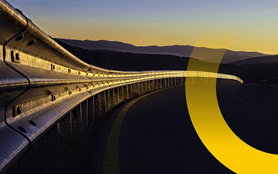Europe’s competitiveness on the global stage
Related people




Sigrid Jansen
Senior Partner
Amsterdam

Ignacio Ruiz-Camara
Partner
Madrid

Arkadiusz Pedzich
Partner
Warsaw

Stefano Sennhauser
Partner
Milan

Catherine Di Lorenzo
Partner
Luxembourg

Catharina Glugla
Senior Associate
Duesseldorf

Nicole Wolters Ruckert
Counsel
Amsterdam

Laurie-Anne Ancenys
Counsel
Paris

Dr Nicolaus Ascherfeld
Partner
Hamburg

Charles Honée
Partner
Amsterdam

Joyce Leemrijse
Partner
Amsterdam

Dr Michael Weiß
Partner
Frankfurt am Main

Dr Wolf Bussian
Managing Partner Germany
Frankfurt am Main

Tom Schoors
Managing Partner Belgium
Brussels

Antonio Vazquez-Guillen
Partner
Madrid

Arnold Keizer
Partner
Amsterdam

Claire Toumieux
Partner - Global Head of Employment
Paris

Patrick Mischo
Office Senior Partner
Luxembourg

Hervé Ekué
Managing Partner
Paris

Jonathan Heeringa
Partner
Amsterdam
Headlines in this article
Related news and insights
Publications: 04 April 2024
Integrating Sustainability: Luxembourg's Legal Advancements with the CSRD
News: 27 March 2024
Allen & Overy advises on the sale of majority stake in GasNet
News: 27 March 2024
Publications: 26 March 2024
Global GDP growth figures show a European economy that consistently tracks lower than those of other major markets. Some of that is down to it being a relatively mature market. But there are other factors at play.
We have a shared belief that we can do something about climate change, and the European institutions give us the opportunity to eliminate boundaries in this endeavour. But when Europe is always at the forefront of making regulations for a better world, it puts European businesses at a disadvantage against companies who are allowed not to care.
General Counsel and Company Secretary, Energy and Utilities
Source: IMF; data correct to November 2023
The EU’s competitive position stems from its common approach to organising – or socialising – free markets. The bloc is founded on the four principles enshrined in the Treaty of Rome in 1957; freedom of movement for capital, people, goods and services. The Single Market legislation in 1986 created two additional freedoms – freedom of establishment and freedom of service – which helped to further embed the Rome treaty’s principles.
Perhaps more importantly, the EU’s purpose (which includes “achieving sustainable development based on balanced economic growth and price stability and a highly competitive market economy with full employment and social progress”) has rested on a social contract between governments, businesses and citizens. This arrangement is built on high standards of consumer and environmental protection, measures to limit tax competition between member states, and the use of proportionate regulation to mitigate against risks and potential market failures.
In the run-up to the 2024 Parliamentary elections however, the sands were starting to shift. With polls suggesting a more extreme right-leaning, nationalist Parliament for the next five-year term, we may see a change in mindset among the EU institutions, with some Eurosceptic forces questioning the value of the shared economic and social ideals at the heart of the European project.
Our research shows that many businesses would favour a loosening of the EU’s strict rules, and indeed there have been growing calls for an EU “regulatory break” (particularly in relation to Net Zero rules) to boost competitiveness. That sentiment however was not universal - other business leaders we spoke to said Europe’s legal and regulatory certainty acts as a counterbalance to any perceived ceiling it puts on growth.
Our survey respondents were hopeful about the future performance of their businesses within the EU, with the majority (56%) optimistic and 31% pessimistic. They were more confident about their prospects in North America (where 64% were optimistic), followed by South Asia and India (60%), Latin America (58%) and the UK (57%), but less so for East Asia and China (41% optimistic).
There was a further sign of confidence in Europe in our respondents’ views on M&A. Among the one in five corporates that had acquired another business within the past two years, most had done so within the EU (41%), while of the 32% of businesses seriously considering M&A activity over the coming two years, only North America (41%) was a more frequently cited destination for that activity than the European Union (31%).
Read more in our article: Europe as an investment decision.
Many businesses see a positive in more ambitious levels of sustainability reporting. They believe that by mainstreaming this thinking into their operations it will make them more competitive in the long run.
Jurei Yada, Programme Leader for EU Sustainable Finance, climate change think tank E3G
The dynamics of an internal market with a combined GDP of USD25 trillion and nearly 450 million highly educated consumers make Europe an attractive place to do business. And the EU’s regulatory framework has created a stable environment within which to invest with confidence – in particular for businesses in advanced manufacturing. It will be fascinating to see how Europe’s regulatory environment evolves in the years to come, and how businesses respond.
The consequences of Ukraine do not contradict the energy transition. Since the war started there is a renewed sense of urgency at both the national and European level, with initiatives that push for faster project development.
General Counsel and Company Secretary, Energy and Utilities
Another key area to watch in the coming years will be Europe’s energy market. Before the Ukraine war, the EU imported 45% of its gas from Russia, so when supplies through the Nordstream 1 Pipeline were cut, energy costs skyrocketed. Research from the European Central Bank revealed the subsequent inflationary spike reduced euro area exports by 0.6%.
Before February 2022, EU legislators were negotiating enhanced renewables targets under the Fit for 55 package, designed to reduce the EU’s net greenhouse gas emissions by at least 55% by 2030.
When the war shifted the focus to energy security, they swiftly pivoted to launch REPowerEU, a plan designed to end Europe’s reliance on Russian gas by 2027 and ensure 45% renewable energy supply by 2030 (5% more than under the Fit for 55 proposals). Research in 2023 from the International Energy Agency predicted renewable capacity in the EU would double by 2028.
Much has been made in the run-up to the election of the potential impact on the EU’s green agenda of a shift to the far right. The EU’s Net Zero timelines – and the regulatory structures it uses to achieve its goals – may be affected by the outcome of the vote. But at the same time, it’s important to understand the role of Europe’s national laws and regulations in the low carbon transition. While the Lisbon Treaty includes solidarity in matters of energy supply, many competencies rest at member state level, with progress across the bloc relying on cooperation between national governments.
Why law and regulation are key to Europe’s energy ambitions
Over the past 20 years, member state support measures have proved effective at expanding Europe’s renewable capacity, with mechanisms including feed-in tariffs and contracts for difference (CFDs) giving project developers the economic certainty they need to build low-carbon infrastructure. Over time, new risk-sharing structures have emerged, including power purchase agreements (PPAs) through which project owners sell their electricity to “aggregators” who then supply wholesale buyers, or even directly to businesses looking to decarbonise their operations.
Not all of Europe’s support schemes have been successful, however. In 2007, Spain introduced generous feed-in tariffs to boost its solar capacity, and while they worked to increase supply, they also gave the government no leeway to reduce the incentives when the price of solar energy fell. As a result, the cost of the policy spiralled, sparking public outcry. The government eventually reduced the tariffs, including via legislation that applied retroactive cuts. But the U-turn triggered arbitration claims worth billions of dollars from investors looking to recover their losses, many of which are still running.
EU learns lessons from the past
Today there are signs that lessons have been learnt. The EU’s proposed electricity market reforms are based on two-way CFDs that have the flexibility to handle energy price shocks. Under these bilateral structures, producers still receive a guaranteed strike price for their electricity, but where it is sold for more on the market, the excess flows back to the state without limitations. Setting clear, stable rules is crucial to guarantee the credibility of the system, which is likely be tested through the low-carbon transition.
Effective permitting is equally critical. The rollout of renewables has been plagued in many countries by the time it takes to secure approvals to build. The EU has been moving since 2022 to require member states to deliver permits within a set deadline (typically a year), although it remains to be seen whether this will work in practice given the lack of resources some authorities have to process applications.
Alongside this, some member states have taken steps to limit the right of third parties to challenge projects, for example by setting time limits on court proceedings or referring challenges directly to appeal or even supreme courts. These moves are designed to counter the risk that investors will refuse to fund projects where there is uncertainty over their future.
It is not a price discussion with suppliers – it is whether you are big enough for them to be bothered talking to you. We know a number of developers who are struggling even to get in the room.
Vice President, Energy and Utilities
Energy industry grapples with supply chain disruptions
Our conversations with industry insiders revealed a series of common concerns. High financing costs and wage inflation, manufacturing shortages and Ukraine-related supply chain disruptions have caused construction budgets to soar, including for critical renewables equipment such as wind turbines. The economics of many new and existing green energy projects now don’t add up, with developers looking to exit some deals.
More than two in three of the businesses (68%) in our survey said they had felt the impact of supply chain disruption, with more than one-in-four (26%) reporting a significant hit. The numbers look similar when viewed through the lens of commodity prices, where 57% of respondents said their companies had seen the effects – and 26% a significant effect.
Our interviewees also highlighted the difficulties of navigating Europe’s fragmented policy landscape. “Various regulatory systems are in place within the different member states, which makes it tougher for Europe as a whole to go faster [on Net Zero]. In addition, we are struggling with how to resolve the energy dilemma, although more renewables is the endgame,” said Mathias Verkest, CEO of Otary. “Europe’s regulatory regimes should enable a faster build-up of renewable energy and offshore wind, supporting sustainable business cases while providing local, clean energy at a stable cost.”
Calls for more coordinated EU energy policy
The energy leaders we spoke to were united in their calls for coordinated EU energy policy to align decarbonisation strategies across borders. “I plea for more coordination, and that’s not sufficiently happening,” added Mathias Verkest. “Grid connections remain key, which need to be developed in basically all countries. These are required before you can develop or add more offshore generating units such as wind farms because you need the connections to bring the power back onshore.” If more Eurosceptic voices enter Parliament, it’s hard to see how this level of cooperation moves any closer, with nationalist and far-right parties advocating for less pan-European cooperation and the return of more powers to national parliaments.
For offshore wind, the supply chain is not unlimited. There are a relatively small number of turbine vendors with a proven track record, and, based on current ambitions, uneven regulatory frameworks and stringent timings, those companies are struggling to make sure that they can keep up with deliveries.
Mathias Verkest, CEO, Otary









